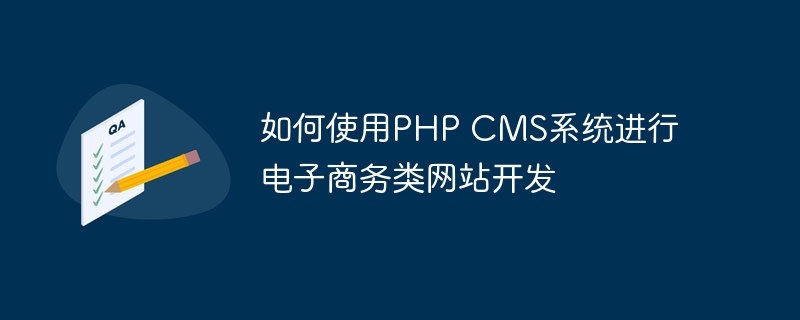

With the continuous development of the Internet, e-commerce has become one of the indispensable business models. In this scenario, many website developers are using a variety of different tools and technologies to build e-commerce websites. Among them, PHP CMS system has become a very popular choice. This article will introduce how to use PHP CMS system for e-commerce website development.
Before we start discussing how to use PHP CMS system for e-commerce website development, we first need to understand what PHP CMS system is. In short, PHP CMS system is an open source content management system (CMS) for building websites. Its mission is to help users manage and publish content within a system while automating a range of tasks, such as real-time backups and maintaining security.
There are many benefits of using PHP CMS system for e-commerce website development. First, it helps users create and manage websites more efficiently. Compared with traditional website development methods, the PHP CMS system can quickly implement website layout and preview. All functions are completed in the same system, and users do not need lengthy and complicated coding. In addition, the PHP CMS system has good security and reliability and is easy to maintain. These features are particularly beneficial for e-commerce websites.
(1) Choose a suitable PHP CMS system
First, you need Choose a PHP CMS system that is suitable for your e-commerce website. You can use popular CMS systems on the market such as Drupal, WordPress and Joomla. When choosing, you need to consider the needs of the e-commerce website and the functions that the system can provide.
(2) Install CMS system
After selecting the CMS system, you need to install it on your server or virtual host. This usually requires some technical knowledge, so you can consult the documentation or ask developers online for help.
(3) Choose an e-commerce plug-in
Choose an e-commerce plug-in that suits you to add e-commerce functions to the CMS system. This plugin may include some extensive e-commerce functionality. You can find many excellent e-commerce plugins in the market, such as Shopify, Magento, WooCommerce, etc.
(4) Configure the plug-in and CMS system
After completing the installation of the plug-in, you need to configure it. You need to fill in the relevant options of the plug-in, such as payment methods, shipping calculations, taxes, etc., to ensure the normal operation of the website. In addition, you will need to customize the design and configure your website layout and theme according to your needs. Each CMS system has its own design and layout tools.
(5) Testing and Deployment
After completing the configuration and design, you need to conduct some tests to ensure that the website can work properly. This includes testing the functionality and security of the website, among other things. After that, you can deploy the website and announce its release to the world.
As a website developer, the application of PHP CMS system has become the choice of many developers. It has many advantages, even in e-commerce type website development. Using PHP CMS system for e-commerce website development requires installing the CMS system, selecting an e-commerce plug-in, configuring the plug-in and CMS system, and testing and deploying it. This method can speed up the website development process and improve the security and reliability of the website, so it is recommended that you use a PHP CMS system when developing an e-commerce website.
The above is the detailed content of How to use PHP CMS system for e-commerce website development. For more information, please follow other related articles on the PHP Chinese website!